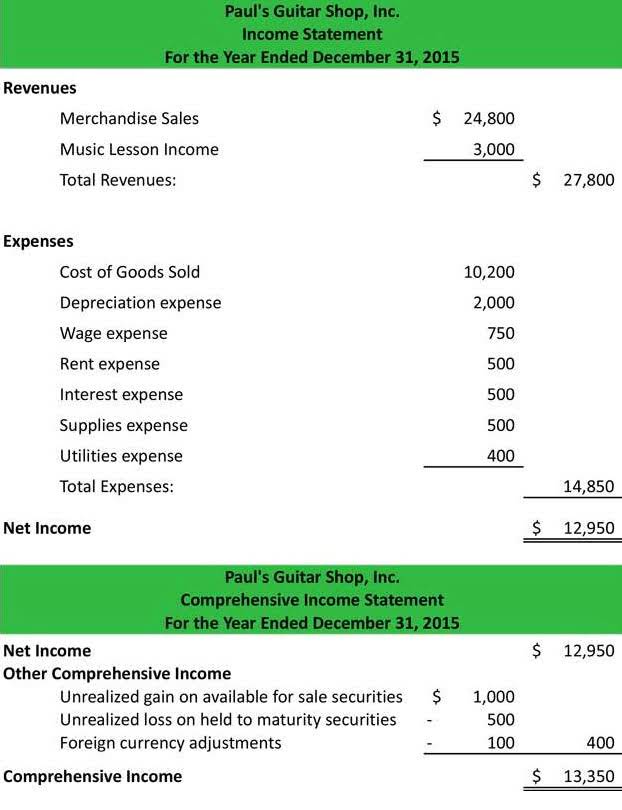
Although using the LIFO method will cut into his profit, it also means that Lee will get a tax break. The 220 lamps Lee has not yet sold would still be considered inventory, and their value would be based on the prices not yet used in the calculation. To calculate the Cost of Goods Sold (COGS) using the LIFO method, determine the cost of your most recent inventory.
- This method is uncommon in India due to tax restrictions and implications.
- Ending Inventory is valued on the Balance Sheet using the earlier costs, and in an inflationary environment, LIFO ending Inventory is less than the current cost.
- The inventory process at the end of a year determines cost of goods sold (COGS) for a business, which will be included on your business tax return.
- Therefore, when COGS is lower (as it is under FIFO), a company will report a higher gross income statement.
- In addition to impacting how businesses assign value to their remaining inventory, FIFO and LIFO have implications for other aspects of financial reporting.
Ending Inventory Formula
Because Sylvia’s cost per platter is going down, she will always be counting the most expensive inventory as what’s left over. Since most retailers are looking to sell their oldest stock first, the LIFO method is unintuitive. But in some cases, it can make your business look more profitable or be a better representation of how your business operates. Under LIFO, each item you sell will increase lifo method formula your Cost of Goods Sold (COGS) by the value of the most recent inventory you purchased.

LIFO Method Explained: Examples, Formula, Pros and Cons for Inventory Management

Kristin is also the creator of Accounting In Focus, a website for students taking accounting courses. Since 2014, she has helped over one million students succeed in their accounting classes. Accountingo.org aims to provide the best accounting and finance education for students, professionals, teachers, and business owners. The periodic system is a quicker alternative to finding the LIFO value of ending inventory. Based on the calculation above, Lynda’s ending inventory works out to be $2,300 at the end of the six days.

LIFO Method of Inventory Valuation: Explanation
Suppose a business purchased 100 grinders at a per unit price of Rs.10 nearly a year before. Then, a week back, the business owner added another set of grinders to his inventory, priced at Rs.15 per unit. It’s natural for the business owner to want to sell off the second set at first. Last in, First Out (LIFO) is an inventory costing method that assumes the costs of the most recent purchases are the costs of the first item sold. While LIFO can offer tax advantages in inflationary environments, it can also lead to distorted inventory valuation and financial statements – especially during periods of fluctuating prices. If you’re concerned about these drawbacks for your business, consider alternative inventory costing methods like the first in, first out (FIFO) method or the average cost method.
Top 50 LeetCode Linked List Questions for Interview Preparation
Three units costing $5 each were purchased earlier, so we need to remove them from the inventory balance first, whereas the remaining seven units are assigned the cost of $4 each. To calculate your cost of goods sold using the LIFO method, you start by assuming that the most recent purchases are the first ones to be sold. So when you sell smartphones throughout the year, you match the sales with the costs of the units purchased most recently. One of the main reasons for this ‘ban’ is the concern that LIFO can result in the https://x.com/BooksTimeInc understatement of income taxes in periods of inflation. By assuming that the oldest, cheaper inventory items are sold first, the COGS reported on the income statement may be lower. As a result, businesses can gain tax advantages that don’t reflect the economic reality of the business.

In most cases, LIFO will result in lower closing inventory and a larger COGS. FIFO differs in that it leads to a higher closing inventory and a smaller COGS. LIFO is more popular among businesses with large inventories so that they can reap the benefits of higher cash flows and lower taxes when prices are rising.
- The IFRS provides a framework for globally accepted accounting standards.
- By reporting a higher COGS and, therefore, lower profits, businesses can reduce their tax liability in the short term, keeping more cash on hand for operations, investment, or expansion.
- While it can lower taxable income by reducing reported profit, it’s important to consider its impact on credit application due to lower profit figures.
- However, the LIFO (Last-In-First-Out) accounting method states the opposite – the newest products get sold first.
- Particularly during periods of declining prices, businesses might contemplate adopting the LIFO method.
Definition of the LIFO Method of Inventory Valuation
For instance, consider a business that bought 100 grinders at Rs.10 each a year ago. The LIFO method is permissible under U.S. tax law, making it an attractive option for companies operating within the United States looking to take advantage of the method’s tax benefits. The cost of inventory can have a significant impact on your profitability, which is why it’s important to understand how much you spend on it. With an inventory accounting https://www.bookstime.com/ method, such as last-in, first-out (LIFO), you can do just that.
FIFO and LIFO are two common methods businesses use to assign value to their inventory. They’re important for calculating the cost of goods sold, the value of remaining inventory, and how those impact gross income, profits, and tax liability. As a business owner operating in the USA, it’s important to familiarize yourself with the Last-In-First-Out (LIFO) inventory valuation method. A key aspect of LIFO is its potential to reduce reported profits, subsequently lowering taxable income. However, it’s crucial to consider that adopting this method may affect your ability to secure credit, as lenders often look at profitability as a key indicator of financial health. Before implementing LIFO, weigh the impact of showing lower profits on your business’s ability to obtain financing.
Which financial ratios does LIFO ending inventory calculation affect?
- In a standard inflationary economy, newer goods have a higher price, so LIFO results in a higher cost of goods sold for the business.
- This means that the goods sitting in the ending inventory are the earliest purchases.
- LIFO finds its primary application in the United States, where it is a permissible accounting method.
- Your leftover inventory will be your oldest, cheapest stock, meaning a higher inventory value on your balance sheet.
- If a company uses a LIFO valuation when it files taxes, it must also use LIFO when it reports financial results to its shareholders, which lowers its net income.
- Under a high-inflation economy, using FIFO results in a significantly lower COGS, leading to a higher taxable income and tax bill.
LIFO might be a good option if you operate in the U.S. and the costs of your inventory are increasing or are likely to go up in the future. By using this method, you’ll assume the most recently produced or purchased items were sold first, resulting in higher costs and lower profits, all while reducing your tax liability. LIFO is often used by gas and oil companies, retailers and car dealerships. Most companies that use LIFO are those that are forced to maintain a large amount of inventory at all times. By offsetting sales income with their highest purchase prices, they produce less taxable income on paper.
